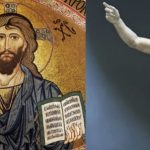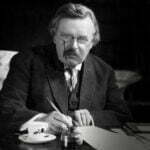A review of What Have They Done with Jesus? By Ben Witherington.
HarperSanFrancisco, 2006.
Available in Australia from Koorong Books.
The most important person in human history is still the subject of countless discussions, books, conferences and theories. Not a day goes by when he is not debated, analysed, and discussed. And not a day goes by, it seems, when some new revisionist theory of Jesus comes along. Indeed, this has become a cottage industry, with speculative novels by Dan Brown being just part of this growing genre.
What much of it amounts to is an attempt to rewrite history, to undermine the reliability of the New Testament, and to recreate Jesus in the image of liberal scholarship. Common to the Christological revisionists are claims that there are lost or suppressed Christianities, and that there is a radical discontinuity between who Jesus really was and how he was represented by his early – and later – followers. Thus we need once again to determine just who Jesus really was, and what in fact was his message.
And the best way to do that, argues New Testament scholar Ben Witherington, is to get back to the inner circle of Jesus. Those who were closest to him or knew him best are our most reliable guides to what he believed and what the early faith was all about. This book provides a close look at this so-called inner circle. It carefully examines those from Jesus’ own physical family: Mary, James and Jude; as well as Peter, the Beloved Disciple, Mary Magdalene, Joanna, and Paul.
Taken together, their testimonies help us understand who Jesus was, and what his core message was. A close examination of these individuals reveals that they all agree to a common understanding of the man and his mission.
Witherington argues that no wide wedge can be driven between these close associates and their take on Jesus, and that of Jesus himself. Consider James, the brother of Jesus, and the first leader of the post-Easter Jesus movement. The contents of the epistle that bears his name are remarkably similar to that of the most basic teachings of Jesus.


For example, one can find over two dozen close similarities between what is found in his epistle and what is recorded in the Sermon on the Mount. This demonstrates, in part, that James is quite familiar with the sayings of Jesus in some form. Says Witherington, “the letter of James is deeply indebted to the Jesus tradition”.
And the oft-heard contentions that James and Paul are fundamentally at odds, or that Paul has radically reinterpreted Jesus, are far from the truth. There are admittedly differences of emphasis between Paul – the missionary to the Gentiles – and James – who ministered to Jewish believers – but their basic message is the same, centred on a high view of Christ and his saving work.
And Paul’s theology flows out of the life and teaching of Jesus. He is no inventor of new theologies, but a faithful witness to the Jesus story. His message is fully in accord with the others of the Jesus circle. Any differences among them, suggests Witherington, are primarily ecclesiological in nature, not Christological.
The inner circle stands in complete continuity with Jesus and his message. And the message they spread was quite congruous. Says Witherington, “the earliest Christian leaders were remarkably similar in their beliefs about the divinity of Jesus, the way of salvation, and basic ethics”.
The idea that they, or others, have somehow misrepresented Jesus or departed from his words and teachings is simply without any firm evidence, argues Witherington. Indeed, the idea that there were competing Christianities during the first century is simply incorrect. The kind of Gnostic gospels and alternative Christianities that many modern liberal theologians seek to argue for simply were not in existence during the time of the very early church, but instead begin to appear in the second to the fourth centuries.
“It is pointless to talk about ‘lost Christianities’ if we are talking about the apostolic age,” says Witherington, “because there were no forms of Christianity like later Gnosticism already extant in the first century.” Indeed, “as far as we know there were no forms of earliest Christianity that did not worship Jesus as crucified and risen Lord”.
The earliest leaders of the Jesus movement shared a very high Christology, and a common understanding of the basic Christian message. Indeed, all the New Testament documents “can be traced back directly or indirectly to the inner circle of Jesus,” and all 27 New Testament documents present a messianic picture of Jesus.
Asks Witherington, who should we most heavily rely upon: The inner circle of Jesus or later Gnostic writings? The inner circle had “more than enough living contact with the historical Jesus to remember who Jesus was, what his teaching was like, and what claims (implicit or explicit) he made of a messianic nature”.
Concludes Witherington, “There is no nonmessianic Jesus to be found at the bottom of the well of history”.
With money to be made by, and faith to be undermined because of, the new Christological revisionism, it is imperative that it is challenged historically and biblically. That Witherington has done to good effect. This volume deserves widespread attention, in the much-needed effort to counter the myths and distortions of the revisionists.
[871 words]




















Bill, thanks for your vigilence. That Paul did not radically reinterpret Jesus is demonstrated in ‘Paul, the Spirit, and the People of God’ by Gordon Fee, p. 6. Here we see that there is no way a case can be made to show that Paul radically reinterpreted Jesus. Can you direct me to any other writer who expands on this?
Stan Fishley
Thanks Stan
Three books come to mind on this issue:
Barnes, Peter, The Gospel: Did Paul and Jesus Agree? Evangelical Press, 1994.
Wenham, David, Paul: Follower of Jesus or Founder of Christianity? Eerdmans, 1995.
Wright, Tom, What Saint Paul Really Said. Lion, 1997.
Bill Muehlenberg, CultureWatch
I have an autographed copy of Rev. Dr Barnes’ book: excellent read.
Jonathan Sarfati, Brisbane
As one well known American politician once said “it is not what I don’t understand in the Bible that worries me, it is what I do understand”.
Modern our intelligentsia say “let us confuse the issue, take all that is crystal clear in Biblical direction, add or subtract to it, really mess it up and then our consciences will be clear.”
It’s very interesting that those people who are experts in the field of Biblical knowledge have to defend the scriptures whilst those people with limited knowledge are free to put forward any theory that they assume.
Jim Sturla